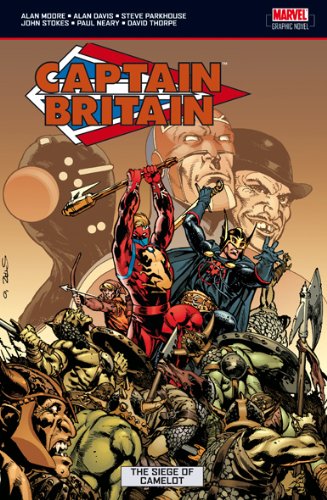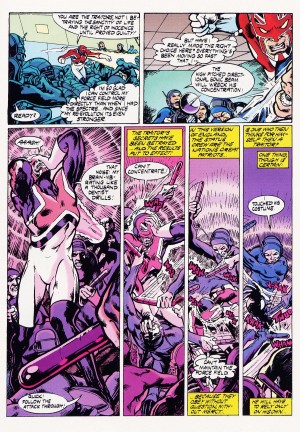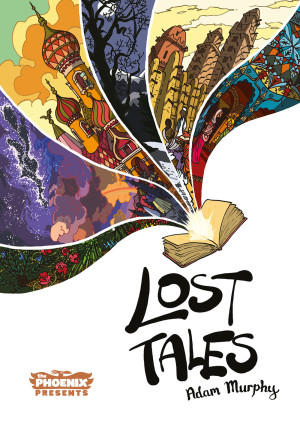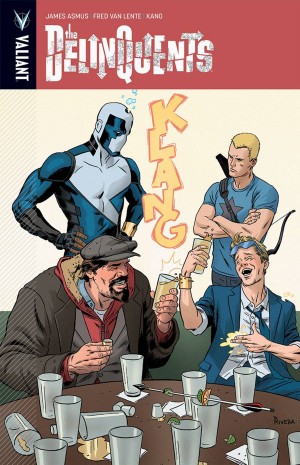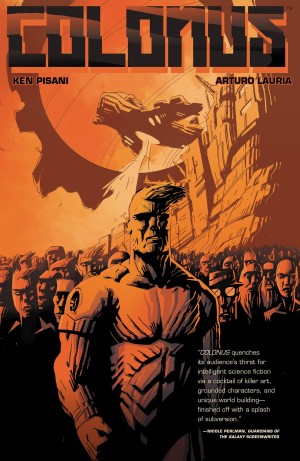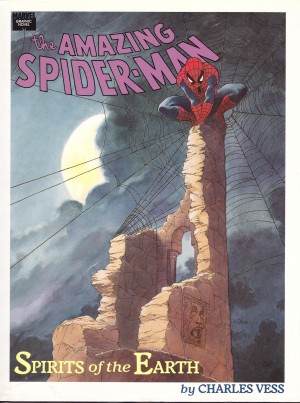Review by Ian Keogh
This book begins the solo material for which Captain Britain is remembered. Alan Moore and Alan Davis took what had been a very poorly treated character and provided him with a personality, some dignity and a viable future. Before then there’s the conclusion of Steve Parkhouse and John Stokes’ Black Knight strip begun in The Lion and the Spider.
Arthurian origins or not, Captain Britain is very much shoehorned into a fantasy epic where he didn’t belong. The Black Knight, nominally the title character of the strip, fared little better as Parkhouse had little interest in either of them. His priority was setting a story in the worlds of British legends, and taken on that basis alone it’s entertaining, with Camelot under threat, old enemies again at each others’ throats and plenty of mythical creatures. Stokes draws this with an illustrative skill, and packs a lot into his panels. If preferred, the entire story can be found in a US published hardback also titled The Siege of Camelot. Well before the end Captain Britain is unceremoniously evicted back to Earth, which is where Dave Thorpe and Alan Davis pick up.
In his grudge-airing introduction Thorpe rightly notes his surrealist approach influenced Captain Britain’s future for many years, and many of his creations were recycled, however it was the subsequent creators who brought them to life. From the start there’s a new costume, and the ill-advised power sceptre is dumped, but sidekick Jackdaw, apparently at editorial insistence, is a mis-step. While there’s an adventurous spirit to Thorpe’s stories there’s little depth or reasoning to them. If he needs something to happen it does, Captain Britain pronounces rather speaks, and a snappy line is never sacrificed for the overall betterment of his story. Some ideas are good, but the execution leaves a lot to be desired for all his bitterness about being replaced as writer. His final tale was to have been set in a very troubled Northern Ireland, and Thorpe’s introduction makes his views of what he considers censorship clear. Laying his original plot over the eventual gang war piece and taking into account the quality of his remaining work doesn’t indicate a writer capable of the subtlety required to address a very sensitive topic.
These stories were the first professional work of Alan Davis, who elsewhere recalls drawing some of them in the back of a truck he was supposed to be loading. His progress over just under two hundred pages of this collection is astonishing. From some confusing segues in the earlier material he rapidly learns how to tell a story, but it’s the variation and emotional intensity of Moore’s writing that really sees Davis up his game. Let’s not forget Moore is also learning, and in his earliest episodes letterer Jenny O’Connor really struggles to fit Moore’s excess of words into the captions and dialogue balloons. Bridging the contributions of Thorpe and Moore is a slight science-fiction page-filler written by Davis with Paul Neary, and best glossed over.
From the first of the Alan Moore stories the production switches to colour, but as they were originally drawn for black and white it doesn’t always work. Flashback sequences especially suffer. A more detailed review can be found in Captain Britain, which also includes the Moore and Davis collaborations occupying a third of the following End Game. Even taking into account Moore is still learning it’s the best Captain Britain to date. He brings coherency to the ideas Thorpe introduced, and builds them into things wonderful and terrifying and still readable now.
